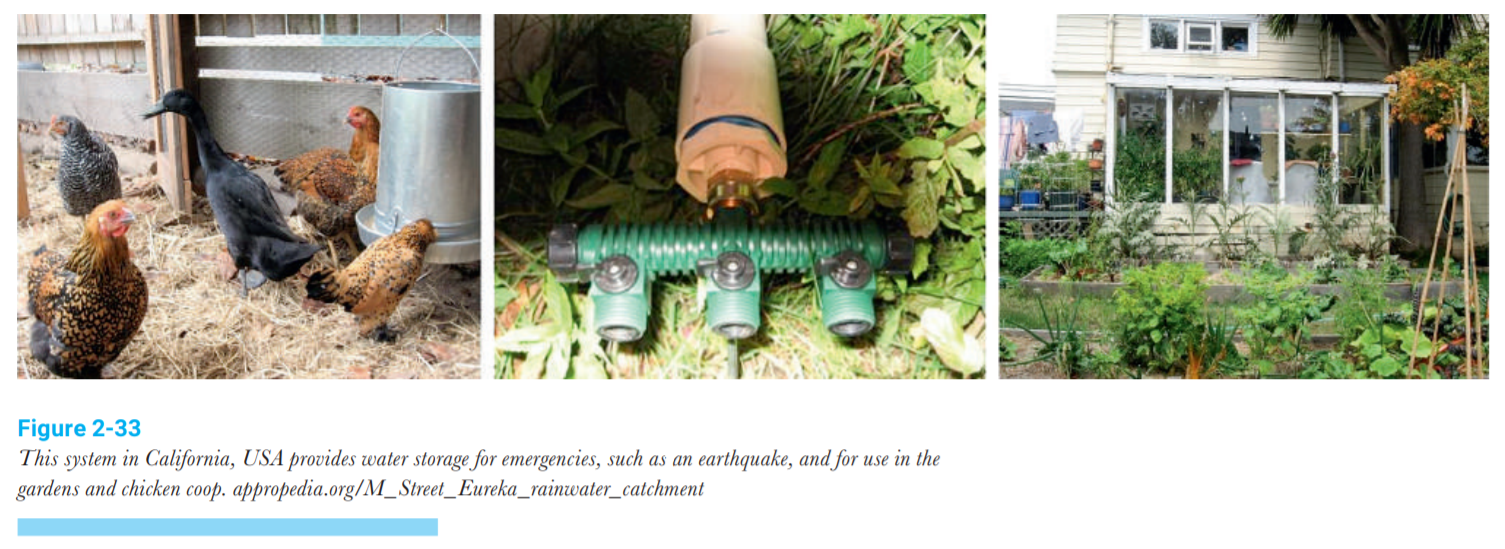2.7: End Use
- Page ID
- 11929
An end use refers to how and where the water eventually will be used. There is no great reason to catch rainwater without an end use. Typical end uses include water for drinking, gardening, landscaping, cleaning, etc. As mentioned before, potable water is a greater challenge than other end uses, which may include cleaning, flushing, washing, watering, etc.
In addition to the level of purity needed, the amount of pressure needed for end use will also affect your choices. Some systems need significant pressure, e.g. showering, where as other systems need less, e.g. drip irrigation. See the images in Figure 2-33 and throughout this book for more examples of different end use cases. The larger the difference in vertical height between water storage and water outlet, the greater the pressure, as discussed in Section 3.



